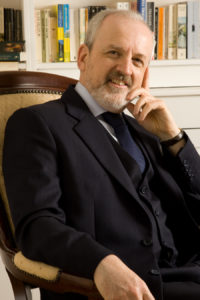 One area of magic that seems to be coming increasingly into focus is social media magic. By this I mean effects that are devised and used almost exclusively on social media platforms such as TikTok, Instagram, Facebook, Twitter, YouTube etc.
One area of magic that seems to be coming increasingly into focus is social media magic. By this I mean effects that are devised and used almost exclusively on social media platforms such as TikTok, Instagram, Facebook, Twitter, YouTube etc.
Initially, the video content tended to be simply recordings of live performances—YouTube in particular is a fabulous source of content featuring the acts of well known magicians from the past as well as contemporary footage. And although many ‘lesser lights’ in the magic world might post videos of their work, these tend normally to have a relatively restricted audience.
But in more recent times, very short magic clips of the type needed to fit in the TikTok format, for example, where you are restricted to 15 seconds or 60 seconds for a video loop, have resulted in magicians designing snappy magic only ever intended for social media use.
I think these shorter clips are a good leveller. Both world famous performers and rank amateurs are all constrained by the same time restrictions, and so it is more likely that the strength of the magic itself is what will get the top number of views, rather than who is doing it.
Magic dealers—never ones to miss an opportunity—are starting to advertise certain effects as ‘suitable for social media’. It has always been the way of magic suppliers to try and pigeon hole every trick. This one is for close up, this for children’s work, and this one is designed for cabaret etc, and so it is inevitable that ‘social media magic’ has become a category in its own right.
So, what does make a good social media trick? Well, clearly something that is visually astounding and essentially very quick would be good starting points. Presentation, plot, performer character can all be jettisoned as there simply isn’t time in this world of eye candy for these elements to be included.
This is all fine when the sole purpose is to attract attention and to entertain. But I do wonder whether some magicians see it as a way to advertise their skills to a potential audience. It’s a possibly huge shop window if the trick gets the requisite number of hits, and can make the performer appear to be a magical god.
However, unlike a more traditional show reel, which would provide footage from a live performance in front of real people and which would show the entertainer working in an environment that is similar to the bookings it is designed to attract, social media magic is completely artificial.
If a booker sees some examples of social media trickery and books the performer on the assumption that this is the type of magic they will receive live, they are likely to be hugely disappointed.
The problem is that social media magic is a very particular animal, and most of the time the only place that the effects can be used is on the internet. Many of the tricks require highly controlled viewing angles, and need perhaps special tables or other impractical conditions unlikely to be found in the normal world.
The point is, this type of magic really needs to be seen in its natural environment (online) and is simply not transferable.
